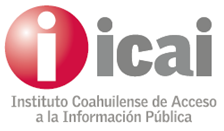VICARIOUS TRAUMA WHAT ARE THE PROTECTIVE MEASURES? BARRY ANECHIARICO
VICARIOUS TRAUMA WHAT ARE THE PROTECTIVE MEASURES? BARRY ANECHIARICO
Trauma is a result of experiencing an emotionally overwhelming event
Vicarious Trauma:
What are the protective measures?
Barry Anechiarico, LICSW
In my 30 years working with sex offenders as a therapist, clinical supervisor, program director, and now agency director, I have spoken with several colleagues who have decided to leave the field of sex offender treatment and management because of the impact that working with sexual abuse cases has had on their lives. They reported struggling with intrusive thoughts and images of the offenses they read about or heard from victims and offenders on their caseloads. They felt anxious and depressed from a career of worrying about the risk of their clients in the community. They experienced the relapse of their clients as person failures. The cumulative impact left many of them feeling emotionally disconnected from their loved ones, less safe, and more fearful for the safety of their children. Many mental health providers and criminal justice professionals working with sex offenders reported similar symptoms of re-experience, avoidance and hyper-arousal – the DSM IV’s symptom criteria for trauma. Their symptoms were not caused by directly experiencing the trauma event. Their trauma was caused indirectly, vicariously, and can be as disabling as if it was experienced first hand (Bride B. 2007).
Through the past decade the field has moved towards clinicians, probation/parole, and victim advocates working more closely together to form a treatment and management team. This has not only given us an opportunity to be more effective in reducing recidivism in sex offenders, it has also created a forum for a cross discipline discussion about the emotional and psychological impact of long term exposure working with sex abuse cases. It is only in the past several years, perhaps in part due to the effect of 9/11 and the global fear of terrorism, that there has been an increased awareness and willingness to discuss the potential psychological harm caused by exposure to the trauma of others. There is growing understanding that the daily tasks of treating and managing sex offenders and their victims is analogous to being regularly “exposed” to harmful “toxins”. These toxins include viewing images of child sexual abuse and child pornography, hearing and reading victim impact statements, listening to an offender describe his brutal rape or sexual abuse of a child, and hearing about deep neglect and deprivation in the offender’s history. This analogy has resonated for many who have endured a career of exposure to the effects of sexual abuse. Research has indicated that the continuous exposure to the profound trauma caused by victimization may lead us to manifest the same or similar symptoms as the victims with whom we directly and indirectly interact (Pullen, C. & Pullen, S. 1996.). Developments in neurobiology and the treatment of psychological trauma offer interventions that can help us manage and potentially protect us from the impact that these “toxins” have on our brains as well as our minds, and our lives.
The symptoms of secondary trauma, also known as vicarious trauma, are the same as primary trauma. “Secondary” refers to proximity to the traumatic event not to the degree of impact. The impact of vicariously or secondarily experiencing a traumatic event can be as powerful as experiencing the event first hand. Our own history of victimization, how we set our personal boundaries, our psychological defenses, and our capacity for empathy, are significant contributing factors to what makes us vulnerable to vicarious trauma (Pullen, C., 1999.).
Trauma is a result of experiencing an emotionally overwhelming event. “Overwhelming” means that an event has created an emotional impact that we can not integrate into our common understanding of ourselves in relation to others and leaves us feeling alone and disconnected from others. This results in emotional dysregulation. The major symptoms indicative of a traumatic experience are described in the DSM IV as: re-experience, avoidance, hyper-arousal. Trauma can cause a replaying of the traumatic event through intrusive memories. Alternatively a trauma could result in becoming avoidant, disconnected, and dissociated as a way of keeping emotional pain out of conscious awareness. The memories and symbols representing the trauma become triggers which can generalize and cause chronic hyper-arousal and emotional dysregulation .
Understanding the neurological/psychological process that causes us to feel the impact of a traumatic event vicariously leads us to protective strategies and remedial interventions. Ironically, empathy, one of caregiver professional’s most important tools may put us at greatest risk to be harmed by the work we do. While it is necessary for caregivers to feel concern about the harm caused to and by the people we work with, is it necessary to emotionally experience the harm caused to them as well?
Neurobiology’s recent discovery of “mirror neurons” in the human brain shows that we are neurologically engineered to read emotional cues from others perhaps as a way of quickly communicating danger as well as determining who we can trust (Daniel J. Siegel, 2006). Mirror neurons help us in understanding a number of human features, from imitation to empathy, and language learning. It has also been claimed that damages in these cerebral structures can be responsible for mental deficits such as autism.
We are instinctively drawn into stories of other’s plights. Our culture and the arts exist in large part because people can be emotionally moved by symbols, representations, and depictions of others personal experiences. We value art that stirs us emotionally. Our ability to have empathy and compassion for our family and friends is what creates the bonds that connect us. Our attunement to our children is what builds their sense of security in attachment to others. When we listen to our clients, victims or offenders, when we read their stories, and view pictures of abuse, we tend to use the same empathy, attunement, compassion, identification that we use with our family and friends. When our family and friends are in trauma, we feel it acutely and struggle to be supportive and helpful. The closer the trauma is to us the harder it is to manage.
As professional caregivers we put ourselves in the world of other people’s trauma routinely. If we use the same relational abilities that we use for our family and friends, then we will be living in the trauma of others. As a result we become vulnerable to the same feelings of lack of control, fear and anger. We can become as emotionally dysregulated as the victim. It is our empathy and attunement (activated through our mirror neurons) that reflexively causes us to bring what we see and hear into our own experience. It is this mind set that creates our vulnerability to vicarious trauma.
The research on trauma from Neurologists like Dan Siegel (2006) and Martin Teicher (2002) help us understand the profound impact that trauma has on our brain. From their research we have information about disruption in the flow of information from the right to the left hemisphere of the brain in people who have been traumatized. Consequently the prefrontal cortex can not create a coherent narrative so the mind can integrate the experience into one’s world view. We also have information about the damage caused in the temporal lobe when cortisol is released under extreme stress which can create hyper arousal.
The extensive work that has been done in developing Eye Movement Desensitization and Reprocessing (EMDR) therapy (Shapiro, 1995), has also had a profound impact on the treatment of trauma. This treatment draws on a similar theory to Siegel’s, that emotional regulation can be achieved through techniques that further brain processing and integration. Shapiro found that engagement in eye-movements compared to the eyes-stationary condition resulted in significant reductions on measures of vividness and emotional valence for both positive and negative autobiographical memories. Reductions in electro dermal arousal were only observed when engaging in eye-movements following elicitation of the negative memory. This treatment can help restore emotional regulation by intervening on how emotions and memories are processed by the brain.
A core contributing symptom to emotional dyregulation is the feeling of being alone, emotionally isolated and disconnected from others. We have decades of information from attachment theorists, object relationists, trauma researcher, the infant studies and now neurologists that attachment is primary in human development. The consequence of broken attachments, insecure or inconsistent early attachments, and abusive attachments are seen in the research to be causal for juvenile delinquency, sexual and general violence, and other criminogenic needs. Now with new research in neurology we have evidence that our mind may actually be formed in response to the interpersonal connections that develop throughout our lives, for better and for worse.
Siegel’s work (2006) suggests that trauma causes profound insecurity and disconnection in our attachments to others which is in part responsible for the emotional dysregulation we see in trauma victims. He suggests that it is the process of building back intimate connections to others that is most important for the recovery from trauma. Spencer, Josephs, Steele (1993) in their research on self-esteem note that the requirement for enduring self-esteem regulation/stability requires being able to turn to affirming intimate connections to others for a reaffirmation of one’s sense of self. When meaningful connections have been broken, self-esteem regulation is often managed with compulsive and impulsive behavior patterns. These patterns become strategies to self-soothe, distract, and avoid the pain and anxiety of a dysregulated sense of self. The symptoms of trauma victims can be understood in this same way.
The research on resiliency and protective factors from vicarious trauma all echo the factors that are prescriptive for a healthy life: balance, boundaries, and connections (Saakvitne, Pearlman, 1996). Judith Herman (1992) points out in her work on trauma and recovery that safety, mourning, and reconnection are requirements for trauma recovery. It is clear that trauma protective and recovery strategies all focus on building affirming intimate relationships. This is considered to be intrinsic in developing emotional regulation.
Providers are challenged to bear witness to the impact of trauma without defaulting to the blunt defenses of callousness and indifference. Is there a middle ground of maintaining empathy and attunement without feeling the trauma? If so how do we achieve it? If we are evaluating and assessing a case by reading material, viewing images, and interviewing a client, we strive to be objective and not let our feelings or underlying emotions influence our judgment. We struggle to find ways to erase the disturbing elements of the case and move on to the next. When we are working with a victim or offender over time trying to aid them in their process of recovery through supervision and treatment, the added dimension of forming an ongoing professional relationship strains our ability to be just understanding and not also emotionally reactive.
It is possible to maintain an empathic understanding and connection with others about their experience without becoming emotionally dysregulated. In Daniel Siegel’s (2007) work on Mindfulness, he discusses emotional regulation. He suggests that “we create nonreactivity by developing the circuits in our brain that enable the lower affect-generating circuits to be regulated by the higher modulating ones…..this is called “response flexibility”-the way that we pause before action and consider the various options that are most appropriate before we respond”. Siegel describes how states of “mindfulness”, can be achieved when we coordinate our autonomic systems with our intentional systems. For example breath awareness can create a state of mindfulness that leads to emotional regulation, emotional integration and ultimately resiliency. He suggests that while an intimate interconnection to others helps with emotional regulation, an intimate intra-connection between our brains and minds can directly impact emotional regulation also.
While employing techniques that advance mindfulness and meditation may build deep and enduring emotional regulation and resilience, there are also other psychological, neurological, social and professional interventions that can be protective. Just as group interventions with offenders has been found to be effective in reducing risk factors like loneliness and emotional disconnection, specially designed consultation and debriefing groups for caregiver professional can be an effective protective factor. These groups can offer ongoing training about trauma protection, provide support, and help maintain connections to other professional. This kind of intervention can address the core protective factors of “balance, boundaries, and connections”.
The DSM IV’s definition of trauma describes symptoms of dysregulation that involve memory. New research in related fields may also be helpful as protective measures to vicarious trauma by disrupting memory formation and creating a protective distance from the images and descriptions of trauma.
For viewing images of sexual abuse, research on visual perception suggests that there are some strategies that can interrupt the process of remembering visual experiences. This can be affected by decreasing our emotional response to visual information. Recent research has shown that for healthy volunteers, playing ‘Tetris’ soon after viewing traumatic material in the laboratory can reduce the number of flashbacks to those scenes in the following week. They believe that the computer game may disrupt the memories of the sights and sounds witnessed at the time, and which are later re-experienced through involuntary, distressing flashbacks of that moment. The Oxford team showed a film to 40 healthy volunteers that included traumatic images of injury from a variety of sources. After waiting for 30 minutes, 20 of the volunteers played ‘Tetris’ for 10 minutes while the other half did nothing. Those who had played the computer game experienced significantly fewer flashbacks to the film over the next week (University of Oxford, 2009).
While this intervention did not interfere with the responsiveness during the experience it did interrupt the retention of the experience and perhaps the binding of emotion to memory. Much like the experience of forgetting where you parked your car when you return from shopping or seeing a movie, intervening experience that are absorbing can disrupt memory formation and the impact of the preceding experience.
Similarly it was found that using distracter images that disrupt the viewing sequence of disturbing target images can interfere with memory formation of the target images. Target images should have minimal eye movement and distracter images should have maximum eye movement (Olson, Sledge, Moore, Drowos, 2008). In another similar study it was found that demanding visual search tasks requiring sequential shifts of spatial attention which were interposed during delays of the target image viewing, impaired binding memories and features in the target image (Johnson, Hollingworth, Luck, 2008).
This research on memory formation offers us evidence to suggest new protocols for managing the exposure to potentially traumatizing material. We should routinely be measuring the time of day and amount of time spent being exposed to potentially traumatizing target material. Off task activities should be planned to distract and disrupt the emotional attention paid to the on task event. Spending 15 to 30 minutes of time engaged in distracting and memory disrupting activities like playing “Tetris” and viewing other distracter images should be considered. Even though this is new research, it offers evidence for a possibly powerful protective intervention.
Other interventions can be developed based on the understanding that our brains connect what we see with what is familiar. We instinctively try to bring what attracts our attention closer so we can better process it emotionally and decide if it’s a theat. Certain interventions can throw our brains off track and trick our minds making it harder for us to bring what we see and hear closer to our experience. Another study from Oxford found that when viewing potentially disturbing images, it may be protective to distort the image. This study found that distorting images of one’s own hand or arm injury by viewing the injury through inverted binoculars with the image appearing very far away reduces reports of pain, reduces swelling and recovery time from pain. Conversely magnifying the images increases pain, swelling and recovery time (Moseley, et al., 2008). Just as we might be inclined to peek through our fingers when watching a frightening movie in attempt to make the image smaller or distorted when it is too overwhelming, distancing the images changes proximity thereby distorting the perception of these images and consequently making them less threatening. Another study on visual fields found that viewing images only through the right eye (right visual field) which activates only the left hemisphere (left brain) will be weaker in storing emotional memories. The right brain, left field of vision, is better for storing emotion/fear based images (Kensinger, Choi, 2009).
The above research suggests that creating the perception of distance between us and the image or viewing images through our right field of vision, may reduce the tendency to react to what we see with strong protective emotions. We can interfere with our tendency to emotionally identify with others by not only creating the perception of distance but also by reducing our search for relational cues in scenarios we hear about and view i.e. not looking at or imagining faces and other body language indicators of fear, pain, and suffering. This would be an attempt to achieve awareness of an event and all its implication without activating in ourselves the same fear, pain, and suffering of the victim.
The power of suggestion is also a significant tool used throughout our culture (advertising). A recent study showed that being instructed to forget an image before viewing the image showed a positive effect in the subjects forgetting images when measured against a control group (Fawcett, Taylor, 2008.). Our psychological perspective as well as our visual perception influences how we are affected by what we see and hear. Using the power of suggestion and adjusting one’s mind set by creating an alternative narrative going into a potentially vicariously traumatic situation can be protective. An example of an alternative mind set is:
“I am going to look at images or hear about sexual abuse. These are images and stories of people being harmed. While I take in this information I will be aware that the emotions I find in these scenarios are not mine. If I also find my emotions from my experiences I will recognize the difference. These events are from the pasts of other people. I do not have control over what happened to these victims. There is violence in the world that I can not stop. I am working to help stop this from happening again. I do not have control over what happened in these events. I am not going to imagine that this is happening to myself, my children, and my loved ones. They are not being harmed. I have empathy and compassion for the pain of others but today I am going to just understand and not feel the victim’s pain.”
It is necessary to develop protective protocols based on the research of the effects of trauma as well as applications of science from related fields in order to protect criminal justice and mental health professionals from being harmed by the work they do. There are several kinds of interventions that can make a significant impact on reducing the effects of and the risk for traumatization. Improving emotional regulation following trauma by utilizing EMDR treatment and Mindfulness techniques can improve resiliency and functioning. Group support, training and debriefing can mitigate the isolation that occurs when professionals struggle with difficult emotions on their own. Developing protocols that utilize techniques that disrupt memory formation like Tetris and using distracter experiences as well as using techniques that change perception by distorting distance and change fields of vision also need to be considered. Readjusting our mindset by consciously reorienting our cognitive and emotional process through narrative statements can provide instructions to our minds about how to think and feel about what we see and hear.
In a world that is wrought with terror and trauma there will always be a need for professionals to attend to the impact of psychological trauma that can resound deep into our social fabric. Protecting our healthcare and criminal justice professionals is a serious public health concern. While there are some who have protective measures built into their minds from stable and secure current and early life experiences, many are not as fortunate. Our field needs to continue to research and develop these and other protective protocols for the health of the professionals doing the work and to maintain effectiveness with our clients.
References
Barrowcliff, A, Gray, N, Freeman, T.,Malcolm J., MacCulloch, (2004). Eye-movements reduce the vividness, emotional valence and electrodermal arousal associated with negative autobiographical memories. Journal of Forensic Psychiatry & Psychology, Volume 15, Issue 2, June, 325 – 345.
Bowlby, J (1969). Attachment and Loss Volume I, New York: Basic Books, Inc.
Bride B. (2007). Prevalence of Secondary Traumatic Stress among Social Workers. Social Work,52(1), 63-70.
Fawcett, J., Taylor, T (Sept 2008). "Forgetting is effortful: evidence from reaction time probes in an item-method directed forgetting task. Memory & Cognition, 36.6 1168(14).
Herman J. L. (1992). Trauma and Recovery. Basic Books.
Johnson, J., Hollingworth, A., Luck, S (Feb 2008) "The role of attention in the maintenance of feature bindings in visual short-term memory." Journal of Experimental Psychology: Human Perception and Performance, 34.1 41(15).
Kensinger, Elizabeth A. & Choi. Elizabeth S. ( Jan 2009) Journal of Experimental Psychology: Learning, Memory and Cognition, 35.1, p247.
Kohut, H. (1997). The Restoration of the Self. New York: International Universities Press, Inc.
Moseley, G. et al., (2008). Visual distortion of a limb modulates the pain and swelling evoked by movement. Current Biology, 18.
Olson, Sledge, Moore, Drowos. (Oct 2008): "The contents of visual memory are only partly under volitional control. Memory & Cognition, 36.7 1360(10).
Pullen, C. & Pullen, S. (1996). Secondary Trauma Associated with Managing Sex Offenders. In K. English, S. Pullen, & L. Jones (Eds.), Managing Adult Sex Offenders on Probation and Parole: A Containment Approach. Lexington, KY: American Probation and Parole Association, 10-1–10-11.
Pullen, C. (1999). The Therapist’s Experience of Sexual Abuse Treatment. In G. Ryan & Associates (Eds.), Web of Meaning: A Developmental-Contextual Approach.
Pullen, C. (1999). The Therapist’s Experience of Sexual Abuse Treatment. In G. Ryan & Associates (Eds.), Web of Meaning: A Developmental-Contextual Approach in Sexual Abuse Treatment. Brandon, VT: The Safer Society Press, 118–132.
Rankin, Kern, (1994). Parental attachments and delinquency, Criminology, 32, p495-515.
Siegel, D. J.,(2006) An Interpersonal Neurobiology Approach to Psychotherapy: Awareness, Mirror Neurons, and Neural Plasticity in the Development of Well-Being. Psychiatric Annals, April/May.
Siegel, D. J.,( 2007).The Mindful Brain: Reflection And Attunement In The Cultivation Of Well-Being. Norton & Company, New York.
Saakvitne, K. & Pearlman, L. (1996). Transforming the Pain: A Workbook on Vicarious Traumatization for Helping Professionals who Work with Traumatized Clients. New York, New York: W.W. Norton and Company.
Shapiro, F., (1995). Eye movement desensitization and reprocessing: basic principles, protocols, and procedures. New York: Guilford Press. pp. 398. ISBN 0-89862-960-8.
Spencer, Josephs, Steele. (1993). “Low self-esteem.” In Baumeister, R.F. Self-esteem, The puzzle of low self-regard, New York: Plenum Press.
Siegel, Daniel J.(2007).The Mindful Brain: Reflection and Attunement in the Cultivation of Well-Being. New York, W.W. Norton and Company.
Teicher, M. (March 2002) The Neurobiology of Child Abuse, The Scientific American
University of Oxford (January 2009). Computer Game 'Tetris' May Help Reduce Flashbacks To Traumatic Events. Science Daily.
About the Author:
B arry
Anechiarico, LICSW,
is the Co-Executive Director and Co-Founder of The Counseling and
Psychotherapy Center, Inc. He has worked with adult sex
offenders at the Massachusetts Center for the Diagnosis and Treatment
of Sexually Dangerous Persons from 1976 to 1980 as a clinician and
again from 1984 to 1987 as the Director of Treatment. He has also
worked as a Director in adolescent programs including the Adolescent
Rehabilitation Center, a locked unit at the Solomon Carter Fuller
Mental Health Center in Roxbury, MA, The Center for Alternative
Education in Boston, and The Somerville Mental Health Center, an
out-patient program for juvenile sex abusers and their families. He
was a clinical consultant to The New England Forensic
Associates, a sex offender specific program in Arlington, MA and an
Assistant Clinical Director at McLean Hospital's Arlington School for
emotionally disturbed adolescents. Mr. Anechiarico has been a
specialist in sex offender treatment for most of the last 30+
years. He is a member of ATSA, CCOSO, MASOC, NASW, and on the Board
of Directors of MATSA. Mr. Anechiarico has lectured internationally
and is a published author on topics in the field of sex offender
treatment.
arry
Anechiarico, LICSW,
is the Co-Executive Director and Co-Founder of The Counseling and
Psychotherapy Center, Inc. He has worked with adult sex
offenders at the Massachusetts Center for the Diagnosis and Treatment
of Sexually Dangerous Persons from 1976 to 1980 as a clinician and
again from 1984 to 1987 as the Director of Treatment. He has also
worked as a Director in adolescent programs including the Adolescent
Rehabilitation Center, a locked unit at the Solomon Carter Fuller
Mental Health Center in Roxbury, MA, The Center for Alternative
Education in Boston, and The Somerville Mental Health Center, an
out-patient program for juvenile sex abusers and their families. He
was a clinical consultant to The New England Forensic
Associates, a sex offender specific program in Arlington, MA and an
Assistant Clinical Director at McLean Hospital's Arlington School for
emotionally disturbed adolescents. Mr. Anechiarico has been a
specialist in sex offender treatment for most of the last 30+
years. He is a member of ATSA, CCOSO, MASOC, NASW, and on the Board
of Directors of MATSA. Mr. Anechiarico has lectured internationally
and is a published author on topics in the field of sex offender
treatment.
Tags: anechiarico has, mr. anechiarico, barry, protective, trauma, vicarious, measures?, anechiarico
- INTERNATIONAL BUSINESS SIMULATION WELCOME TO THE WORLD’S MOST EXCITING
- PERANCANGAN & PELAKSANAAN AKTIVITI R&D KMPH TAHUN 2016 STATUS
- LAMPIRAN 2 SURAT AKUAN KEBENARAN IBU BAPAPENJAGA MENYERTAI AKTIVITI
- 11 ЗАТВЕРДЖЕНО НАКАЗ ФІНАНСОВОГО УПРАВЛІННЯ БЕРИСЛАВСЬКОЇ РАЙОННОЇ ДЕРЖАВНОЇ АДМІНІСТРАЦІЇ
- BAHAGIAN III MATLAMAT TUJUAN DAN AKTIVITI 6 7
- LAMPIRAN 1 PENGESAHAN PENERIMAAN TAKWIM AKTIVITI TAHUNAN POLITEKNIK MERLIMAU
- GENERAL MEETING THE MINUTES OF THE GENERAL MEETING HELD
- RD 100HR 0011 INSTITUT PERKHIDMATAN AWAM JABATAN
- PONAVLJANJE – DECIMALNI BROJEVI 44 PONAVLJANJE PRIJE ISPITA ZNANJA
- B LAMPIRAN C ORANG RUMUSAN AKTIVITI SUKAN KOKURIKULUM
- PASTATO ŠILDYMO IR KARŠTO VANDENS SISTEMOS PRIŽIŪRĖTOJO ATLIEKAMŲ DARBŲ
- INTER INTERNATIONAL FEDERATION OF ADAPTED PHYSICAL ACTIVITY
- WNIOSEK PRZEDSIĘBIORCY UBIEGAJĄCEGO SIĘ O ZEZWOLENIA NA SPRZEDAŻ LUB
- KESIHATAN – DAN – KESEJAHTERAAN ANDA PENYAKIT BUAH PINGGANG
- FREEBODY DIAGRAMS FREE BODY DIAGRAMS (FBDS) ARE SIMPLIFIED REPRESENTATIONS
- MANUAL RULES TEXAS WINDSTORM INSURANCE ASSOCIATION TABLE OF CONTENTS
- LA NUOVA RETE DELLE SCUOLE LOMBARDE PIERFRANCO MAFFÈ PRESIDENTE
- SCENARIUSZ LEKCJI PISMO ŚWIĘTE – WYJĄTKOWA KSIĘGA 1
- KANDUNGAN KANDUNGAN MUKA SURAT 1 LATAR BELAKANG MAJLIS BANDARAYA
- D LOGO DE LA STRUCTURE OSSIER DE CANDIDATURE INSERTION
- ASSESSMENT QUESTIONNAIRE BENCHMARKING EXERCISE AGAINST THE OECD POLICY HANDBOOK
- PERATURANPERATURAN AKTIVITI ~PKENPS PERATURANPERATURAN AKTIVITI KOPERASI AKTIVITI JIMAT
- SLUŽBY AKADEMICKEJ KNIŽNICE HENDIKEPOVANÝM POUŽÍVATEĽOM AKADEMICKÁ KNIŽNICA MTF
- INFORMACJA O WYNIKU NABORU NA WOLNE STANOWISKO STRAŻNIKA –
- 91 DERECHO MERCANTIL LECCIÓN 1 LAS OBLIGACIONES MERCANTILES Y
- UTM TITAN BIOTERRORISM TRAINING REGISTRATION NAME DAYTIME PHONE
- B UPNMPPPI005 ORANG PERMOHONAN MELAKSANAKAN AKTIVITI LUAR (DALAM NEGARA)
- DRUK PD 15 STARACHOWICE … (IMIĘ NAZWISKO INWESTORA)
- KEMENTERIAN AGAMA MADRASAH ALIYAH NEGERI 5 JOMBANG KAMPUS
- DR HARGITAI ZOLTÁN ALELNÖKJELÖLT 1948BAN SZÜLETTEM ESZTERGOMBAN
 „KOMPLEKSI RISINĀJUMI SILTUMNĪCEFEKTA GĀZU EMISIJU SAMAZINĀŠANAI BALTINAVAS KULTŪRAS NAMĀ”
„KOMPLEKSI RISINĀJUMI SILTUMNĪCEFEKTA GĀZU EMISIJU SAMAZINĀŠANAI BALTINAVAS KULTŪRAS NAMĀ”LECCIÓN FUNDAMENTOS CONSTITUCIONALES DEL SISTEMA DE RELACIONES LABORALES ESTUDIO
CHRISTIN HILL BAR REVIEW WILLS 1 INTENT A CAPACITY
 DISTRIBUCIJA ELEKTRIČNE ENERGIJE DISTRIBUCIJSKO PODRUČJEPOGON POSLOVNICARJ NADNEVAK
DISTRIBUCIJA ELEKTRIČNE ENERGIJE DISTRIBUCIJSKO PODRUČJEPOGON POSLOVNICARJ NADNEVAK Assignment of Authorship Responsibilities the Undersigned Authors Hereby Affirm
Assignment of Authorship Responsibilities the Undersigned Authors Hereby Affirm R OYAUME DU MAROC CONSEIL RÉGIONAL DE TOURISME RÉGION
R OYAUME DU MAROC CONSEIL RÉGIONAL DE TOURISME RÉGION XIVJORNADAS DE TRABAJO SOBRE CALIDAD EN SALUD XII CONGRESO
XIVJORNADAS DE TRABAJO SOBRE CALIDAD EN SALUD XII CONGRESOVLADA REPUBLIKE HRVATSKE 456 NA TEMELJU ČLANKA 3
 RECTÁNGULO 1 SOLICITUD PARA INCLUSION DE INFORMACIÓN 1 SEÑOR(A)
RECTÁNGULO 1 SOLICITUD PARA INCLUSION DE INFORMACIÓN 1 SEÑOR(A) SVEIKATOS SOCIALINĖS IR ŠVIETIMO PASLAUGOS NARKOTIKŲ VARTOTOJAMS PARENGĖ VIEŠOJI
SVEIKATOS SOCIALINĖS IR ŠVIETIMO PASLAUGOS NARKOTIKŲ VARTOTOJAMS PARENGĖ VIEŠOJI MÚSICA PARA CONECTAR CON LA OBRA CONTEMPORÁNEA DESDE LA
MÚSICA PARA CONECTAR CON LA OBRA CONTEMPORÁNEA DESDE LA PLAN DE COMUNICACIÓN RSGICPO04 V01 3 DE 3 COMUNICACIONES
PLAN DE COMUNICACIÓN RSGICPO04 V01 3 DE 3 COMUNICACIONES2017 SCHREIBER HIGH SCHOOL COMMON SCHOLARSHIP APPLICATION AGATE SCHOLARSHIPBALTIMORE
 1 LA UE RECOMIENDA A LOS PAÍSES MIEMBROS ACELERAR
1 LA UE RECOMIENDA A LOS PAÍSES MIEMBROS ACELERARMEMORANDUM OF UNDERSTANDING FOR SCIENTIFIC AND TECHNICAL COOPERATION BETWEEN
 UNIVERSIDAD DE GRANADA CURSO ACADÉMICO 20082009 ASIGNATURA ANÁLISIS
UNIVERSIDAD DE GRANADA CURSO ACADÉMICO 20082009 ASIGNATURA ANÁLISIS P UBLIC DISCO INSURANCE FORM COMPLETED FORMS SHOULD
P UBLIC DISCO INSURANCE FORM COMPLETED FORMS SHOULDNOMBRE DE LA INSTITUCIÓN IDENTIDAD DEL LABORATORIO PROCEDIMIENTO GENERAL
 AVISO DE PRIVACIDAD INTEGRAL (NOMBRE DEL SUJETO OBLIGADO
AVISO DE PRIVACIDAD INTEGRAL (NOMBRE DEL SUJETO OBLIGADOSAK 3 – ÅRSMØTE 2012 ÅRSMELDING SJUSJØEN VEL